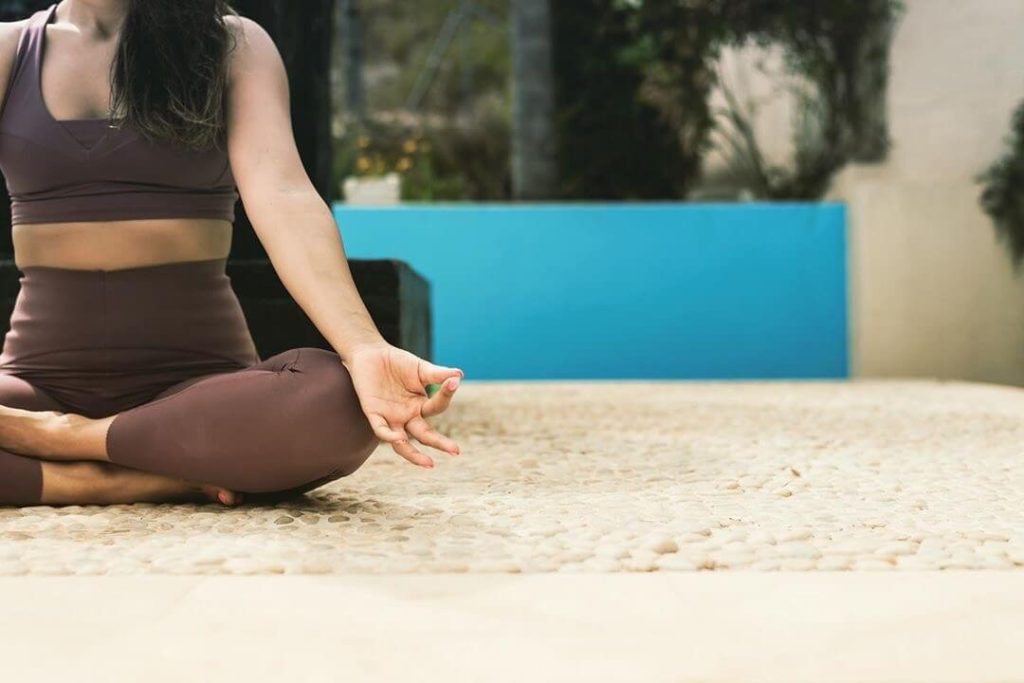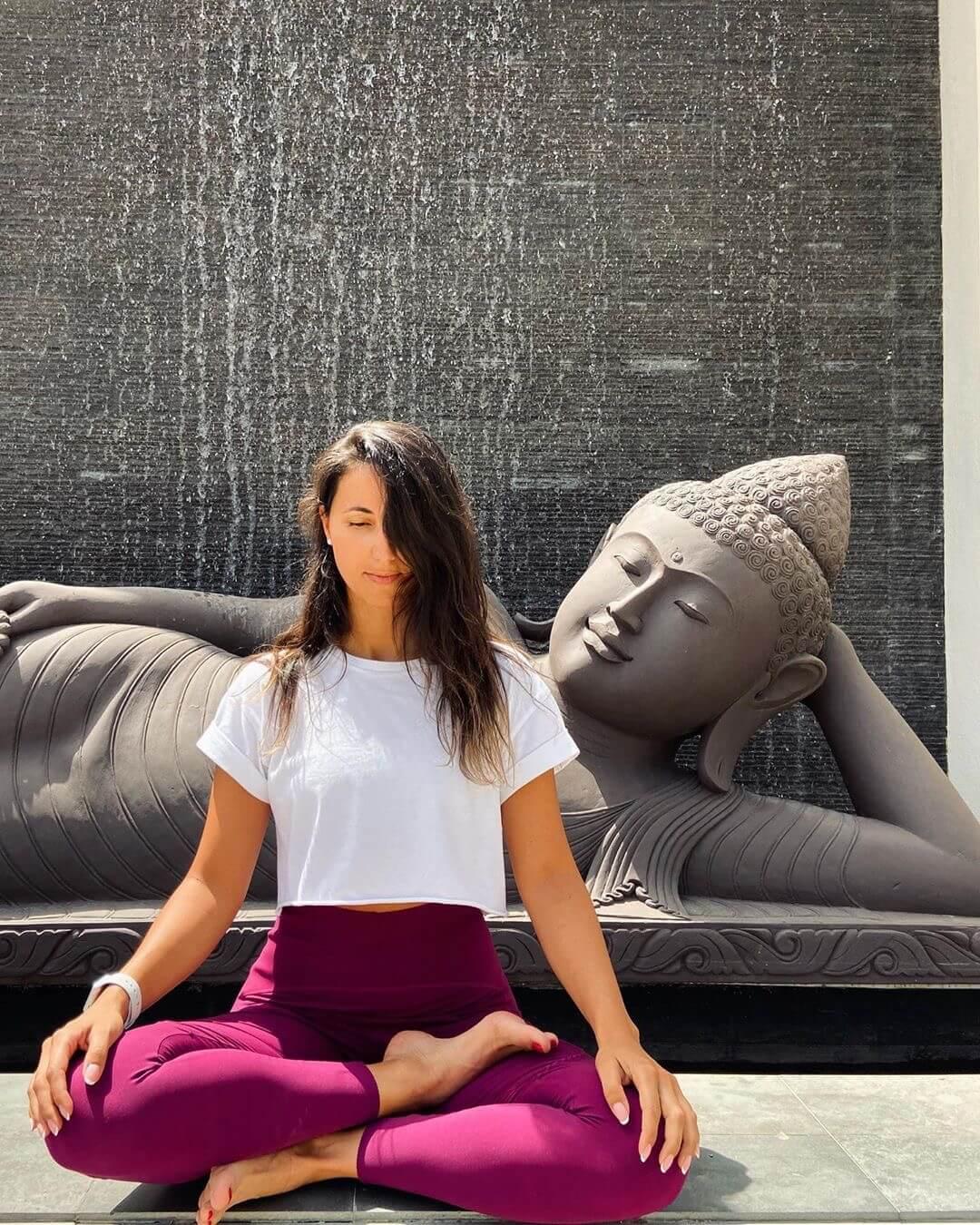What are the Health Benefits of Meditation and Mindfulness?
So, you’ve decided to explore what are the health benefits of meditation and mindfulness for the mind and body. That’s a great start and you’re not alone – meditation and mindfulness practices have become a common way for people to de-stress, manage sleep and anxiety. In the current world we live in we are constantly consumed by our thoughts and worries. Meditation is an excellent way to take time for yourself every day to decompress and get perspective. However as a beginner, meditation can seem quite daunting and unrealistic – let’s bust that myth together.
What is Meditation?
Put most simply, meditation is a way to train the mind. We exercise to train our bodies and we also need to train our mind to be balanced, positive and happy. Most of the time, our minds are wandering — we’re thinking about the future, dwelling on the past, worrying, fantasizing, fretting or daydreaming. Meditation brings us back to the present moment, and gives us the tools we need to be less stressed, calmer and kinder to ourselves and others.
Meditation isn’t about learning how to empty your mind or stop your thoughts. Instead, meditation is the practice of training your attention and focus from a place of non-judgement.
Health Benefits of Meditation and Mindfulness
There has been a whole movement of scientific studies looking at the measurable benefits of meditation on the brain and connection to healing our body.
Meditation is something everyone can do to improve their mental and emotional health, here are some key benefits:
- Reduces stress
- Helps control anxiety
- Promotes emotional health
- Enhances self awareness
- Lengthens attention span
- May reduce age related memory loss
- Can generate kindness
- May help fight additions
- Improves sleep
- Helps control pain
- Can decrease blood pressure
- It’s accessible anywhere
One of the most interesting studies in the last few years, carried out at Yale University, found that mindfulness meditation decreases activity in the default mode network (DMN), the brain network responsible for mind-wandering. The DMN is “on” or active when we’re not thinking about anything in particular, when our minds are just wandering from thought to thought. Since mind-wandering is typically associated with being less happy, ruminating, and worrying about the past and future, it’s the goal for many people to dial it down. Several studies have shown that meditation, through its quieting effect on the DMN, appears to do just this. And even when the mind does start to wander, because of the new connections that form, meditators are better at snapping back out of it. This is said to help with anxiety and depression.
Eliminating Roadblocks to Meditation
Let’s face it, meditation is a daunting prospect. You’ve heard people rave about it but how can you possibly sit still for more than 1 minute and focus your mind simply on breathing? In the beginning it’s totally normal for your mind to resist and think mediation is for hippy dippy types. Try put those thoughts aside- focus on what meditation COULD do for you – do you want to be less reactive, feel less stressed or be more focused?
Many highly successful individuals rely on taking time out for meditation every day. Jeff Weiner, CEO of LinkedIn puts aside blocks in his day to mediate and noted in an interview published in February 2012 in The Wall Street Journal, that pausing to reflect on situations helps him to strategize and work proactively towards long-term goals. “Part of the key to time management is carving out time to think, as opposed to constantly reacting,” Weiner said.
A lot of people disregard meditation and say it doesn’t work for them. Of course it shouldn’t be forced. But if you’re curious on the movement towards self-care and holistic health then let your guard down.
The reasons why meditation doesn’t work can be easily fixed.
For example, the major roadblock to getting into meditation is that your mind tends to wander. Your brain is racing to various random thoughts or you just keep thinking ‘what is the point of this’? There’s nothing wrong with that and it’s natural. Meditation is not about stopping your thoughts. It’s about learning to observe them without judgment or attachment. When you notice your mind starting to race, simply acknowledge what it is you are thinking about then take a moment and pause. You don’t need to pull your attention right back to the breath. Instead, let go of whatever it was you were thinking about, reopen your attention then gently return your awareness to the breath. Be present for each inhalation and exhalation.
Don’t let the perception or belief of what ‘meditation looks like’ make you believe you have to sit cross legged in an awkward upright position. If that doesn’t work for you, meditation and mindfulness can be practiced sitting in a chair or even lying down with your arms and legs spread out. Do what works for your body because if you are not comfortable there is no hope that you can relax your mind and focus on anything else but that cramped up leg muscle. If simply focusing on your breath is not possible in the beginning, then try lighting your favorite candle or incense so your mind first focuses on and enjoys the fragrance.
Be realistic. Take your time and don’t expect immediate results. Just like exercise or changing the way you eat, meditation takes time to notice a major change. Give yourself at least a month before you decide if it’s for you or not (meditation sessions should be for around 5-10 minutes).

Mindfulness & Meditation
Mindfulness has become a ‘trendy’ word and can often be misunderstood as meditation. It’s important to recognize that meditation and mindfulness are not one in the same.
If the main idea of meditation is to be present and aware of your thoughts and feelings, mindfulness is the ongoing practice of honing that awareness and reconnecting to WHAT we do and WHY we do it to gain appreciation in life.
For example, if you’re totally immersed in a single task, and not thinking about the past or imagining the future, you’re being mindful. Or, if you go for a walk and feel lost in nature, you are listening to the chirping birds or falling leaves, then you are also being mindful.
There are many simple ways to practice mindfulness.
Some examples include:
- Simply stop and pay attention to what is going on around you. It’s hard to slow down and notice things in a busy world. Try to take the time to experience your environment with all of your senses — touch, sound, sight, smell and taste. For example, when you eat a favorite food, take the time to smell, taste and truly enjoy it.
- Live in the moment. Try to intentionally bring an open acceptance and attention to everything you do. Find joy in simple pleasures rather than worrying about ‘what ifs’ or what you think needs to be done.
- Mindfulness Meditation is the practice of focusing on your breathing. For example, when you have negative thoughts, try to sit down, take a deep breath and close your eyes. Focus on your breath as it moves in and out of your body. Sitting and breathing for even just a minute can help.
For beginners, Mindfulness Meditation is a great way to start and the most popular form of meditation in the West. Other types of meditation suitable for beginners include:
- Body scan meditation-
Lie on your back with your legs extended and arms at your sides, palms facing up. Focus your attention slowly and deliberately on each part of your body, in order, from toe to head or head to toe. Imagine each part of your body is being scanned. Be aware of any sensations, emotions or thoughts associated with each part of your body. - Sitting meditation-
Sit comfortably with your back straight, feet flat on the floor and hands in your lap. Breathing through your nose, focus on your breath moving in and out of your body. If physical sensations or thoughts interrupt your meditation, note the experience and then return your focus to your breath. - Walking meditation-
Find a quiet place 10 to 20 feet in length, and begin to walk slowly. Focus on the experience of walking, being aware of the sensations of standing and the subtle movements that keep your balance. When you reach the end of your path, turn and continue walking, maintaining awareness of your sensations.
Ready to give it a go? Here is an easy guide to start with some Mindfulness Meditation. We suggest starting for 5-10 minutes a day with some guided meditation, and incrementally increasing up to 20 minutes for 4 weeks to realize the health benefits of meditation and mindfulness.
- Settle In- find a quiet space. Using a cushion or chair, sit up straight but not stiff; allow your head and shoulders to rest comfortably; place your hands on the tops of your legs with upper arms at your side. There is a misconception that you must sit cross legged in a Yoga pose- just sit or even lie down however is most comfortable for yourself.
- Now breathe- close your eyes, take a deep breath, and relax. Feel the fall and rise of your chest and the expansion and contraction of your belly. With each breath notice the coolness as it enters and the warmth as it exits. Don’t control the breath but follow its natural flow.
- Stay focused- thoughts will try to pull your attention away from the breath. Notice them, but don’t pass judgment. Gently return your focus to your breath. Some people count their breaths as a way to stay focused.
The health benefits of meditation and mindfulness are genuine, but the journey to achieving it can be difficult. Let us know how your journey into meditation has been. Which meditation works best for you and how did you overcome your roadblocks?
At Shanti-Som Wellbeing Retreat we have a daily group meditation for all our guests as well as specific guided meditation styles. Please contact us to be involved or get some 1:1 guidance on your meditation journey.
Wishing you every success!

